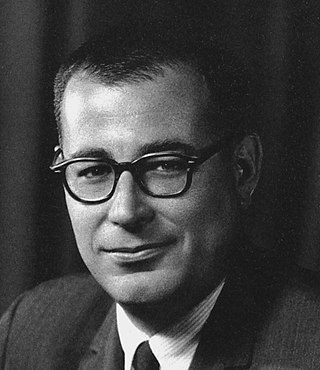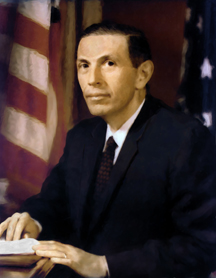List of recipients
Recipients of the Harold Brown Award include:
| Year | Name | Notes |
|---|---|---|
| 1969 | Ronald W. Terry | [1] |
| 1975 | John R. Boyd | [2] United States Air Force fighter pilot and Pentagon consultant |
| 1976 | Herbert J. Hickey, Jr | [3] For engineering F-15 handling qualities. |
| 1977 | Joseph C. Foster, Jr. | University of Illinois/Urbana-Champaign Awarded for research in advanced conventional warheads while at the Air Force Armament Laboratory, Eglin AFB FL |
| 1978 | Henry Berry Garrett | [4] [5] Project scientist for the SCATHA (Spacecraft Charging at High Altitude) program For developing a mathematical model of the earth's space environment at high altitudes |
| 1979 | Terence James Elkins | |
| 1982 | Raymond P. Urtz | [6] |
| 1985 | George A. Vanasse | [7] Physicist at the US Air Force Geophysics Laboratory at Hanscom Air Force Base in Bedford, Massachusetts |
| 1986 | John F. Paulson | Air Force Research Laboratory, Hanscom Field, Lexington, Massachusetts Awarded for major advances in ion-molecule chemical kinetics |
| 1987 | Davy Belk | [8] Member of the Senior Executive Service and Director, Information Directorate, Air Force Research Laboratory, Rome, New York For developing computational fluid dynamics methods. |
| 1990 | Carl E. Baum | [9] Senior Scientist at the Air Force Research Laboratory |
| 1991 | Northrup Fowler III | |
| 1994 | William F. Storm | |
| 1995 | John M. Reising | [10] Air Force Research Laboratory For the successful transition of cockpit technology including pictorial displays, voice control and display symbology |
| 1997 | Jeffrey L. Craig | [11] for Panoramic Night Vision Goggle Development |
| 1998 | Chi Tsieh (Jimmy) Liu | |
| 1999 | Robert Q. Fugate | |
| 2000 | Frank Marcos | |
| 2001 | Dean F. Kocian | |
| 2002 | Nelson Forster | [12] Air Force Research Laboratory at Wright-Patterson Air Force Base, Ohio For his work developing corrosion-resistant materials for engine mechanical systems |
| 2003 | Dr Peter M. Wegner | [13] For his work in developing spacecraft technologies |
| 2004 | H. John Mucks | [14] Electronics engineer for the Air Force Research Laboratory, Rome, New York For the web-based Time Line Analysis System. |
| 2005 | John A. Caldwell | [15] Air Force Research Laboratory at Brooks City-Base, Texas For his research on the effects of fatigue. |
| 2007 | Jim F. Riker | [16] Air Force Research Laboratory |
| 2008 | Mark Haney | [17] |
| 2009 | Derek Kingston | [18] Air Vehicles Directorate For improvements to the technology for cooperative unmanned air vehicle (UAV) route surveillance |
| 2010 | Dr. Candace Lynch | [19] Senior scientist at Hanscom Air Force Base, Mass. For pioneering new infrared technology. |
| 2011 | Dr. Michael Hooser | [20] A chief scientist from Holloman Air Force Base, New Mexico For his role in significant advances in hypersonic missile research. |
| 2012 | Dr. Mark H. Draper | [21] A senior engineering research psychologist, Air Force Research Laboratory's 711th Human Performance For human factors research. |
| 2013 | Dr. Peter J. Collins | [22] Associate Professor of Electrical Engineering, Graduate School of Engineering and Management, Air Force Institute of Technology |
| 2014 | Dr. Donald R. Erbschloe | [23] Senior Level Executive (SL) and Chief Scientist of the Air Mobility Command, Scott Air Force Base, Illinois |
| 2015 | Dr Lisa Tripp | [24] Airman Systems Directorate's Continuous Learning Branch For innovative and cost-saving training methods and platforms for the Air Force intelligence community |
| 2016 | Lt Col (sel) Joseph C. Pomager | Program Manager, Command & Control Systems, Integrated Combat Systems Division, Air Force Rapid Capabilities Office Led Chief of Staff-directed effort to increase situational awareness, streamline command and control, and shorten the kill-chain, while reducing stove-piping. |
| 2018 | Dr. Robert Johnson | Principal investigator at Air Force Research Laboratory Starfire Optical Range (SOR). [25] for outstanding contributions including identifying a breakthrough in physics that enables high-resolution ground to space imaging |
| 2021 | Maj. Ronald Kemker | [26] In recognition of Dr. Kemker's significant achievements in aviation electronics development for dozens of Automatic Target Recognition models, a novel data fusion scheme and five processing algorithms. |
| 2024 | Dr. Scott Nykl | In recognition of Dr. Nykl's research related to autonomous aerial refueling via computer vision. |















